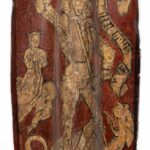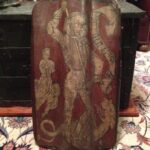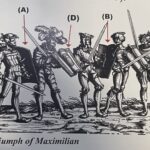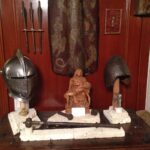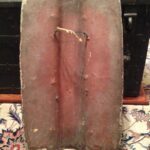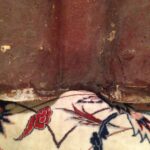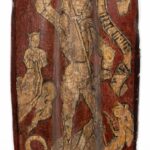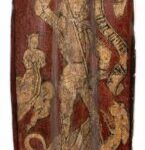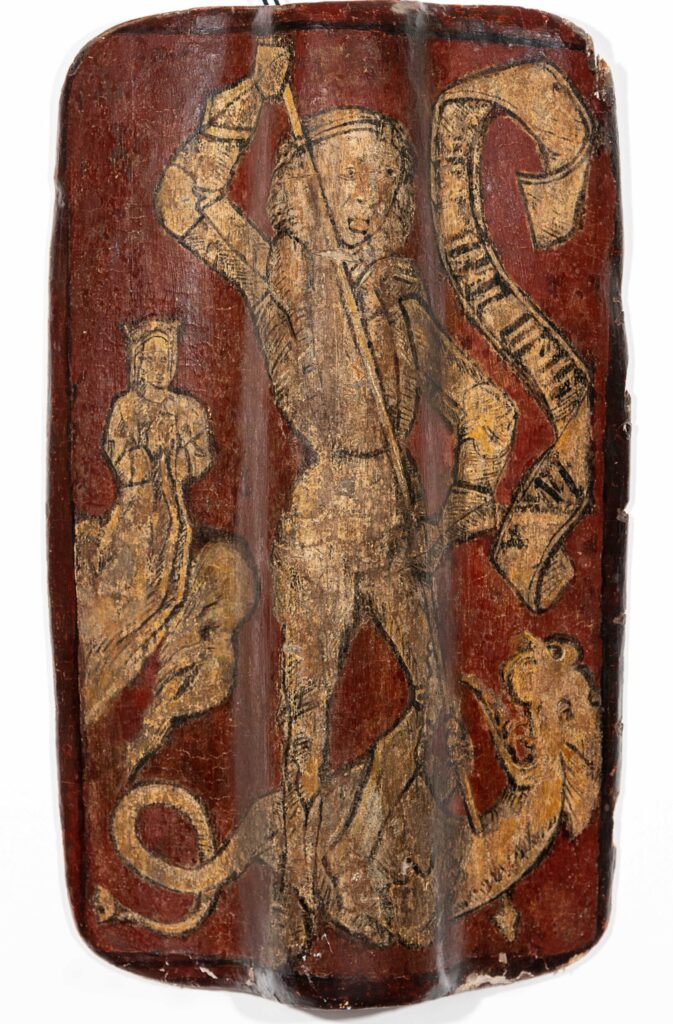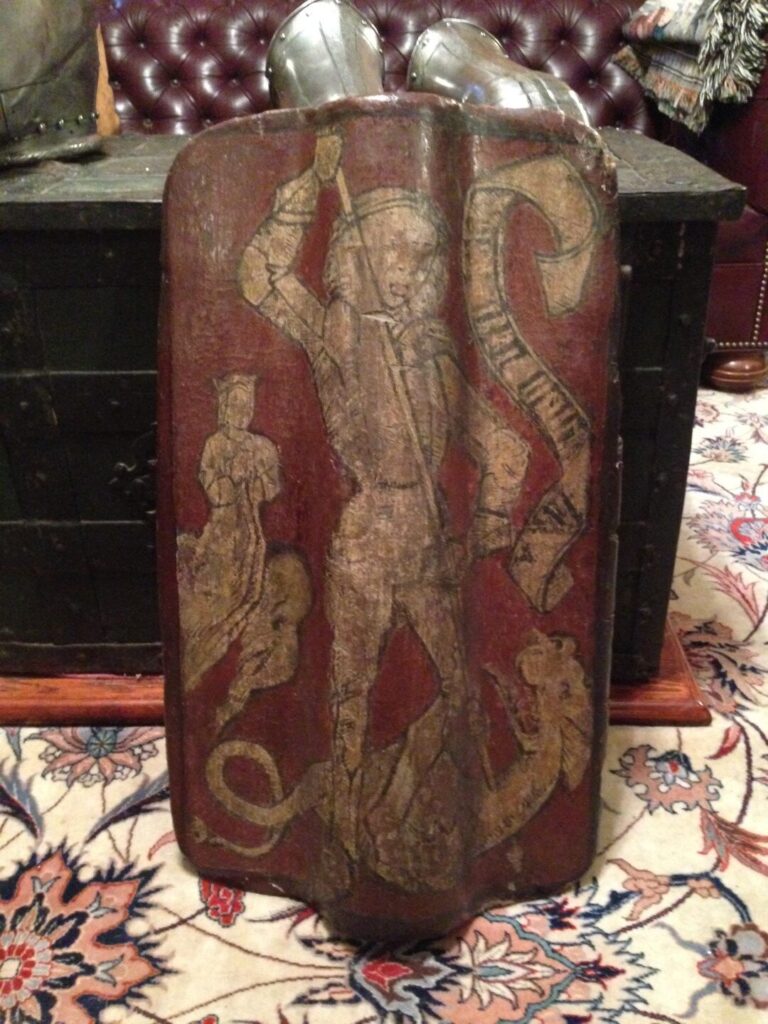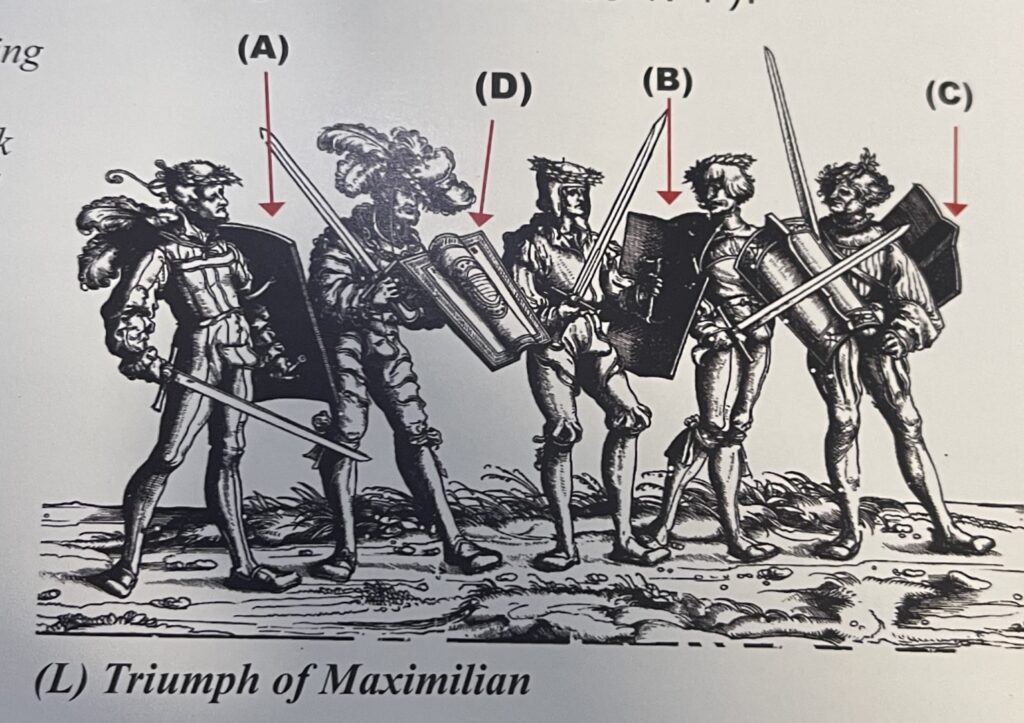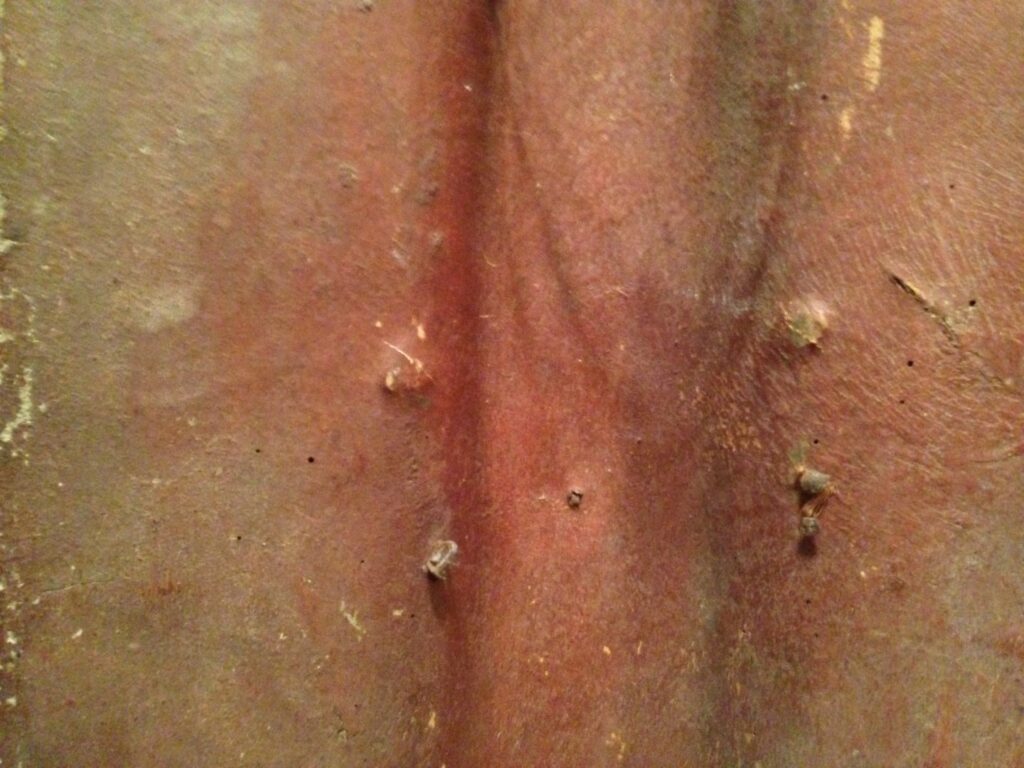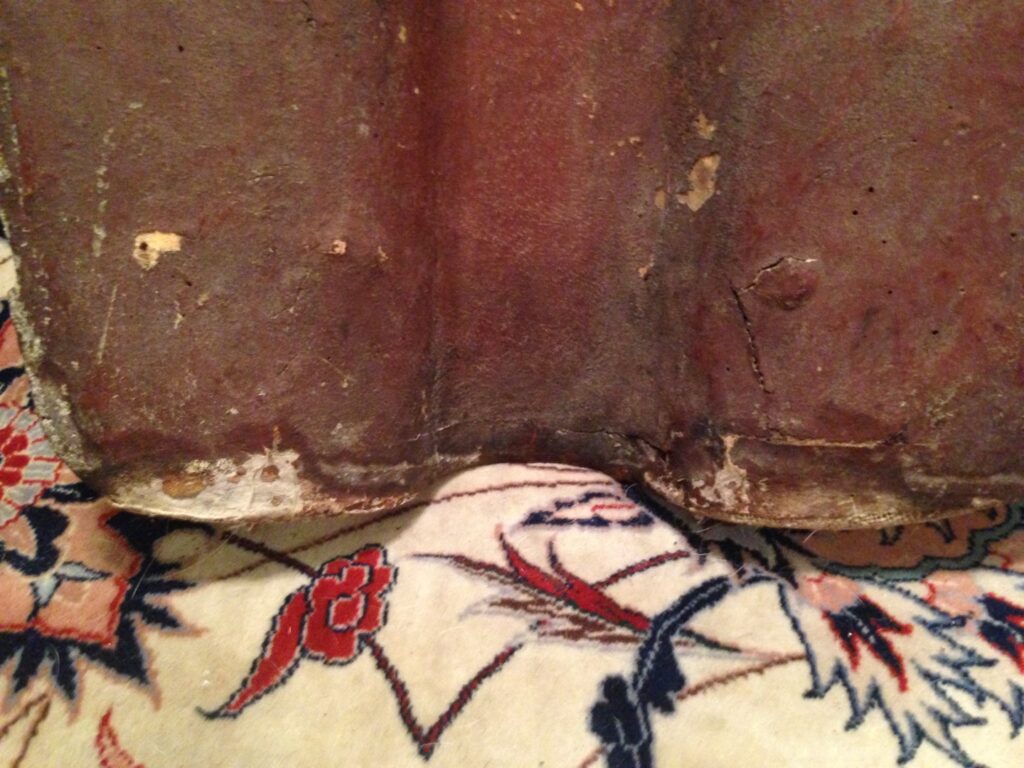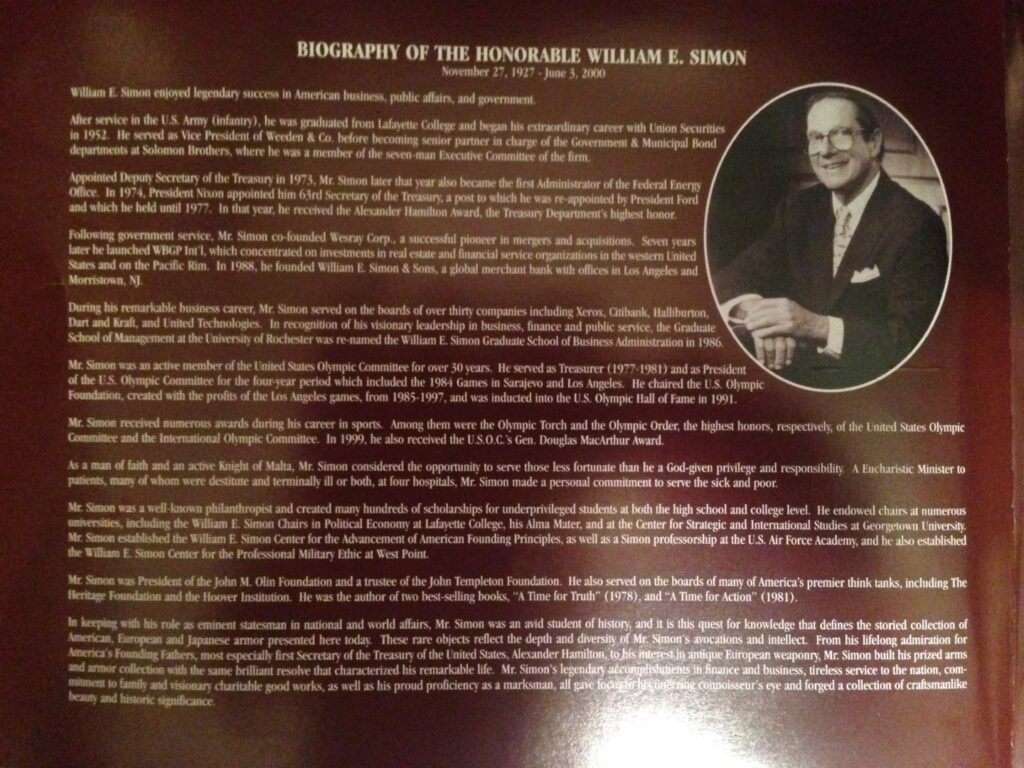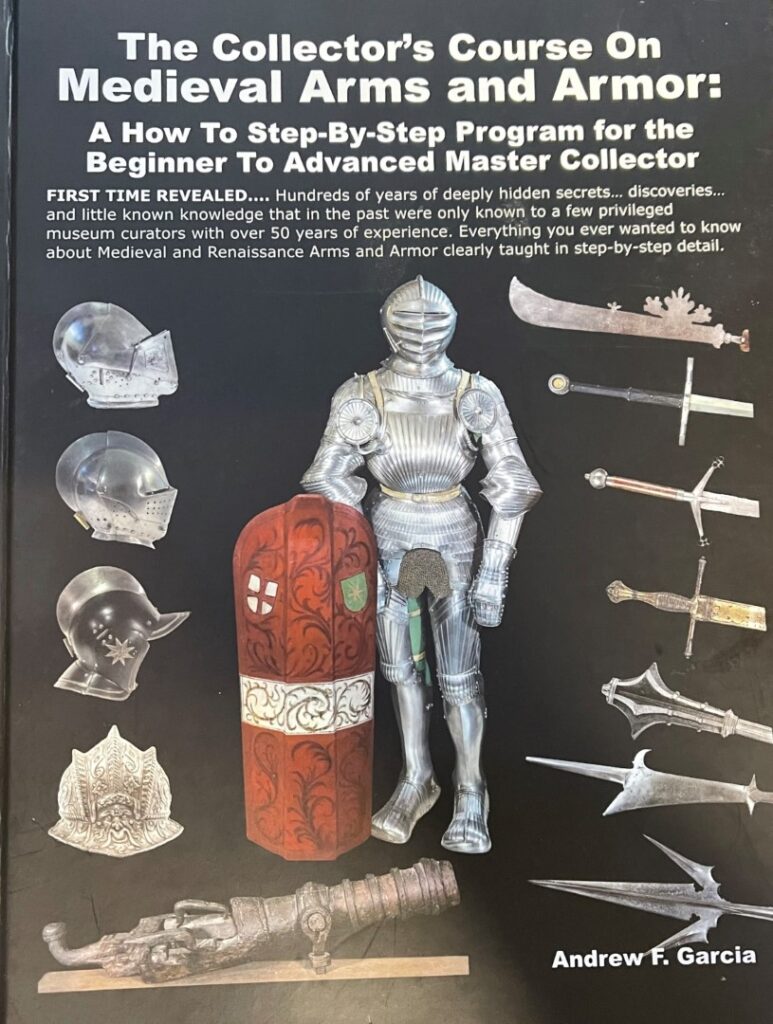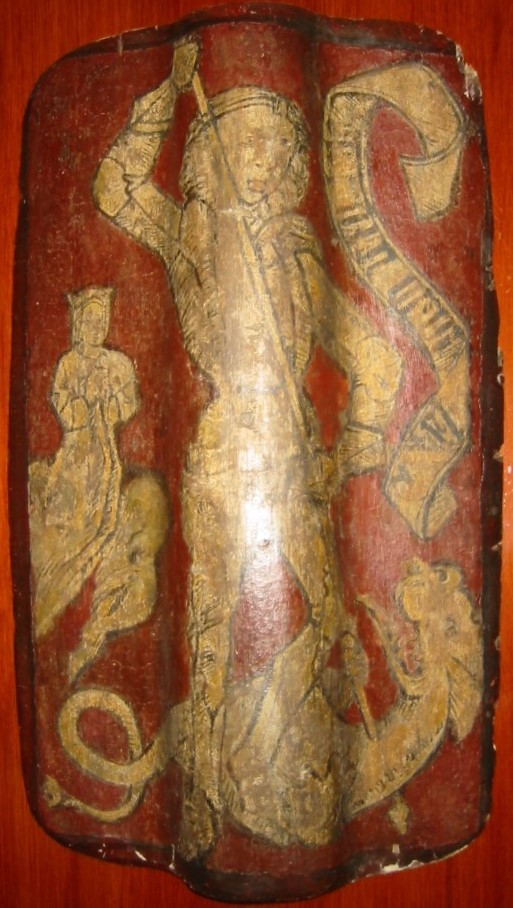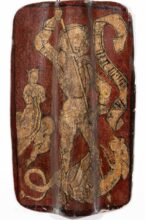1318pavise
1318) A RARE AND IMPORTANT FOOT SOLDIER’S SHOULDER PAVISE CIRCA 1480: The pavise is believed to have derived its name from the North Italian city of Pavia as early as 1250. The effectiveness of the pavise is evident by how quickly it spread throughout Europe. The pavise was used with noteworthy results during the Bohemian Wars of 1419- 1434 (Christian Hussites against the combined Christian Catholic forces).
Construction: Made of one piece of wood covered in gesso. It has a figure of St. George slaying the dragon. The conservator was very clever in restoring the background, leaving the original work of the original artist. This shoulder pavise is easy to date by its high Gothic armored St. George which would date it to circa 1480.
Dimensions: 25 x 16 inches.
Discussion: With the advent of cap-√°-pie (full) plate armor circa 1420, the entire body of the knight was now fully protected; therefore, a shield was no longer necessary. However, as warfare began changing to a faster pace, knights with light armor like the Landsknecht (wearing slash and puff armor, see pages 136, 169, and 408-L) needed to use a (D) pavise/shield for protection. A woodcut shows five soldiers with kriegsmesser and pavises/shields depicted in the (L) Triumph of Maximilian. The pavises they used were held by a (B) medial grip or pair of (B) enarmes. This type of pavise is of much smaller proportions than the crossbowmen/gunner pavises. Maximilian referred to these troops as “Gefecht” or “Fenders.” These infantry pavises were wielded with the (A) weak arm (usually the left) and a sword on the strong arm (for most people, the right). They were used by mercenaries, city militia, individual combatants, and in duels. The pavise would extend from the shoulder and cover the hand. When not in use, the pavise was carried over the shoulder, which is where the name “shoulder pavise” probably originated. First printed in 1526, the woodcut Triumph of Maximilian, also known as the Tournament Book (Turnierbuch), was a series of 200 allegorical woodcuts; however, the number was cut down to 137 upon Maximilian’s death. It was created from preparatory drawings by Hans Burgkmair the Elder (1473‚ 1531), who is credited with about half the illustrations, and probably hand-colored by his son, Hans Burgkmair the Younger (circa 1500‚ 1559).
Provenance:
-William Simon, former Secretary of the US Treasury.
-Andrew Garcia.
Publication: The Collectors Course On Medieval Arms and Armor, A Garcia, 2022, page 408.
Conclusion: A pavise is a double winner for any collector. It is a piece of Medieval European warfare and a beautiful Medieval painting. They look most impressive hanging on the wall or standing upright on the ground, mimicking their original intended posture when used. Like any Medieval painting, they have been conserved. The conservator of this pavise was very clever in restoring only the background, leaving the original work of the original artist.
For the collector who only wants the rare and the best! Priced to sell to the discriminating collector!!!*
Contact Me To Get The Latest Lowest Price Possible From The Owner*

